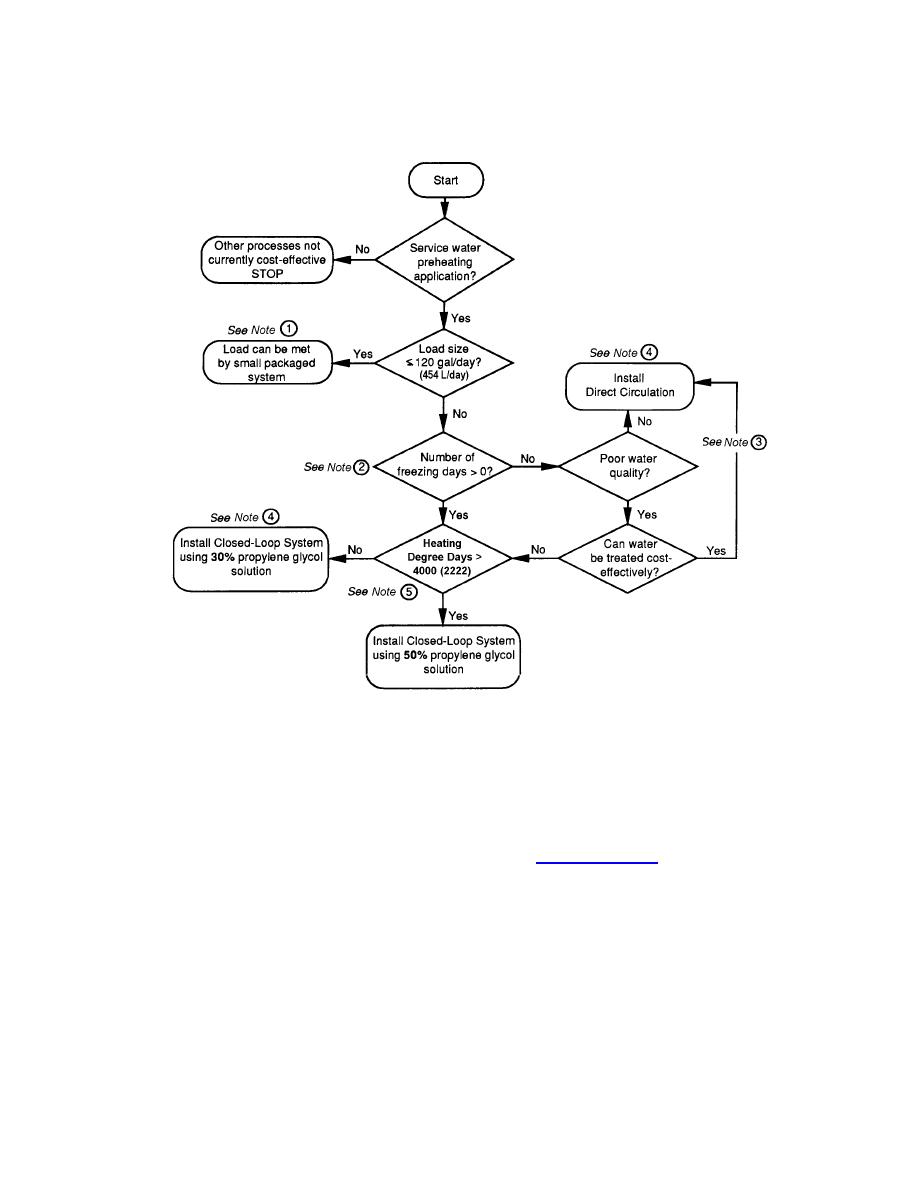
UFC 3-440-01
14 June 2002
Figure 3-3. System Selection Flowchart
Figure 3-3 Notes: Notes keyed into the flowchart are listed below by corresponding number.
1. For small loads on the order of a residential-sized service water heating system, the design effort and expense can be
avoided by purchasing a pre-designed "packaged" system from a reliable manufacturer. These systems are sold in a variety of
configurations, including drainback and closed-loop.
2. The number of freezing days at the site should be determined, based on recorded historical data. To meet the "no
freezing day" criterion, there should be no evidence of freezing temperatures for a period approximately equal to the expected
lifetime of the system. Existing data shows that no location in the continental U.S. can meet this criterion. Historical weather
data can be obtained from the Air Force Engineering Weather Data web site (http://www.afccc.af.mil/) or from local National
Weather Bureau stations or from the Environmental Data Service, a branch of the U.S. Department of Commerce.
3. Water quality should be determined using APPENDIX C.
4. Systems larger than 3,000 ft2 (279 m2) will require very large piping (4-inch (100 mm) diameter or larger) and roof
area, and are not recommended. If this situation occurs, the designer should consider installing two separate systems.
Although this approach is somewhat more costly, it improves the ease of construction and allows solar energy to be collected
in the event of one system being down due to maintenance or repair. The decision to use separate system depends on
specific project parameters and is left to the designer
5. Both the Fahrenheit (F) and Celsius (C) based versions of heating degree days are presented (the Celsius based
number is in parentheses). Heating degree days are based on the mean annual number of degree days using a base of 65
degrees F (18 degrees C). Only 30 to 50 percent volume propylene glycol/water solutions can be used in closed-loop systems.
Locations requiring a closed-loop system that have less than 4,000 (2222) heating degree-days per year may use the 30
percent solution; those having more heating degree days should use a 50 percent solution. This heating day criteria is
provided as a suggested guideline only. It is up to the designer to take into account each location's particular climate and
freezing-day characteristics when determining whether a 30 or 50 percent solution should be used.
3-5


 Previous Page
Previous Page
